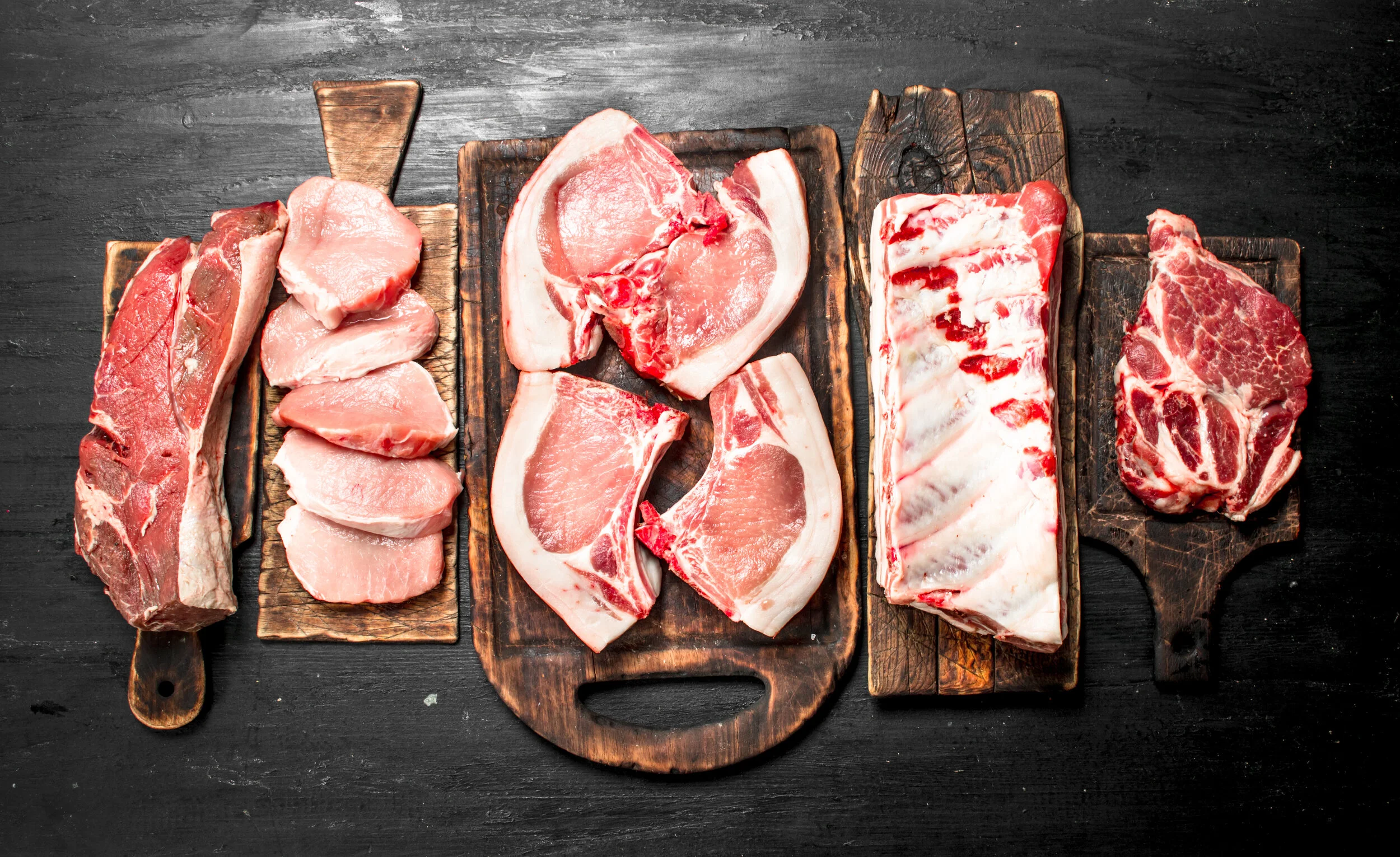Why grass fed beef?
100% grass fed beef is nutritionally superior to congenitally raised grain/corn fed beef. It is lower in saturated fat than corn fed beef, due to the fact that grass is high in protein and fiber, while being low in starch. Grass fed beef has higher amounts of omega-3 fatty acids. These are the healthy fats found in salmon, flaxseed, and walnuts. Studies indicate these help prevent heart disease and bolster the immune system. Grass fed beef also has higher levels of Conjugated Linoleic Acid (CLA’s) and vitamins A & E. Research indicates that these antioxidants and healthy acids help fight breast cancer, atherosclerosis, and type 2 diabetes.
Why pastured pork?
Pigs that are raised on pasture are also raised in an ethical, compassionate way. Pastured pork is higher in Omega-3 fatty acids resulting in health benefits for the consumer. These hogs are raised in open pastures, no troughs, no added hormones, no antibiotics and are minimally processed.
How do I prepare grass fed beef?
Grass fed beef tastes the way nature intended. No added hormones or antibiotics allow the natural, rich flavors of the beef to come through. Don’t worry - we will send you off with preparation tips and keep you up to speed on great recipes! The key to preparing grass fed beef is to do it low and slow. This means to use low heat for longer periods of time. The goal is to cook the inside without overcooking the outside. Grass fed beef has high protein and low fat levels, the beef will usually require 30% less cooking time and will continue to cook when removed from heat. For this reason, remove the beef from your heat source 10 degrees before it reaches the desired temperature. Use a thermometer to test for doneness. Let the beef sit covered for five minutes after removing from heat to let the juices redistribute. Use tongs instead of a fork to turn your grilled beef in order to retain the tasty juices. Thaw your beef in the refrigerator. Since grass fed beef is low in fat, coat with virgin olive oil for flavor enhancement, and to prevent drying and sticking.
How much freezer space do I need?
- 1/8th Beef Share: 2 cubic feet
- 1/4 Beef Share: 3.5 cubic feet
- 1/2 Beef Share: 7 cubic feet
How does the beef come packaged?
The beef comes fresh frozen and wrapped in vacuum sealed packaging which preserves its flavor and freshness for up to three years. Each piece is labeled with the cut and weight. It will come packaged in a box(s), easy to load into your vehicle.
How does the pork come packaged?
The pork comes fresh frozen and labeled with the cut and weight. It will come packaged in a box, easy to load into your vehicle.
Is this USDA Certified Organic Beef?
Unfortunately, for small family farmers organic certification is cost prohibitive. "Organic Certification" means that the livestock weren't treated with hormones or antibiotics and were fed a pesticide-free diet. All of our farmers adhere to these same organic standards and even go so far as to say they are "beyond organic."
What do the cattle eat during the winter?
All of our cattle are only fed grass (and mothers milk) throughout their entire life. In the winter they are fed combinations of hay, balage, or silage consisting of ryegrass, orchardgrass, fescues, native warm-seasons, alfalfa, clovers, chicory, etc.
Where are the cattle processed?
We use a USDA-approved small, family owned and operated processing facility, Lorentz Meats in Cannon Falls, MN. Lorentz specializes in a customized, stress-free processing method for each animal.
When are the cattle harvested?
We harvest cattle at different times throughout the year depending on the season and the farmers herd availability.
Where is the pork processed?
The pigs are processed at a small family run butcher shop in Eyota, MN. The pork is minimally processed and we do not use nitrates or MSG.
What Ingredients are used when minimally processing prok?
Uncured ham - Sea salt, celery juice powder, cherry powder (contains turbinado sugar), brown and maple sugar (100% maple syrup), cinnamon, clove, sodium phosphate.
Uncured bacon - sea salt, celery juice powder, cherry powder (contains turbinado sugar), brown and maple sugar (100% maple syrup), cinnamon, clove, sodium phosphate.
Breakfast links - salt, brown sugar, spices (including black pepper) stuffed into sheep casing.
Bratwurst - salt, turbinado sugar, spices stuffed into natural hog casing.
What is the fat content of the ground beef?
Our beef's fat ranges between 10% – 15%. Keep in mind that the fats in grass fed beef are where the healthy acids are stored.
What breeds of cattle do you use?
We prefer British breeds as they do best with an all grass diet.
WHat breeds of pigs do we use?
We use Idahoan pastured pigs. They are a very gentle and good natured butcher pig that resembles the Kunekune pig in personality.
How is the beef aged?
Our beef is dry aged for fourteen days.
Why do you practice rotational grazing?
Rotational grazing (moving cattle from pasture to pasture) is good for the cattle, the feed, and the land.
Are the cattle fed any genetically modified grass or soy?
Never. Here is a list of grasses included in our feeding protocol: ryegrass, orchardgrass, fescues, native warm-seasons. Also, legumes/forbs (Non-Rodeo Roundup alfalfa, clovers, chicory, trefoil, beets, and dandelions). What is prohibited from the diet are: grains (except flax seed), mature corn silage, any genetically modified organism, animal by-products, fish by-products, candy, potato products, soy, and distillers grains.

